
In this section:
- Heritage of Yorkshire
- White Rose Flags & Yorkshire Day
- Geography of Yorkshire
- Yorkshire Dialect
- Yorkshire Wildlife
- Yorkshire Sport
- Yorkshire Guide
- YDM Posts Relevant to this section
Heritage of Yorkshire:
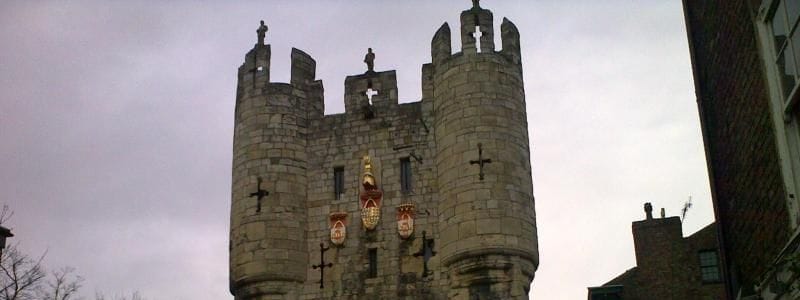
Although archaeology has been found proving the presence of people in Yorkshire during the paleolithic era, the earliest known settlers to Yorkshire came in around 8770BC, in the early Mesolithic era. Archaeological evidence of this has been found at Star Carr near Scarborough in the North Riding of Yorkshire. Since then Yorkshire has been home to many peoples including the British tribes of the Brigantes and the Parisi, followed by Romans, Angles, Danes and the descendants of the Danes, the Normans. Together with more recent migrants from around the world, they have each played their part in writing Yorkshire’s story. Like that story has evolved over time, so too will this section of our website.
Our intention is to pull together information from many sources, including our own, to create a comprehensive account of Yorkshire’s rich and unique history and heritage. One such source, The Yorkshire Archaeological and Historical Society, provides lots of interesting information, whether pursuing advanced research or just engaging with Yorkshire’s heritage. See their website via the link in their logo, below:
The Founding of Yorkshire (Deira):
British Kingdoms, Roman Occupation and Angle Conquest
Kingdoms Having Territory Within the Historic County of Yorkshire

At the point of Roman occupation, the land now identified as Yorkshire consisted of the British Kingdom of the Parisi, roughly equating to the East Riding, and territory of the powerful Kingdom of the Brigantes, a federation of former independent British tribes. Roman occupation of Yorkshire lasted from 71AD to 407AD.
After the departure of the Romans, the Ceasariensis (Province) returned to native control and became the Kingdom of Northern Britain. This kingdom was short-lived due to internal conflict that soon resulted in its subdivision into smaller British kingdoms, amongst which was the kingdom of Ebrauc. By this time the former Kingdom of the Parisi formed part of Ebrauc and was known as ‘Deywr’, from which the river and area of ‘Derwent’ have derived.
Many Angles had settled in Deywr since around 420AD after being hired as mercenaries to help protect the area against attack from the north. They anglicised its name to ‘Deira’ and by 559 took control of the area under their leader Ælla who pronounced himself King. Ælla continued to advance into Ebrauc and in 580 completed its absorption into his Kingdom of Deira, by then roughly equating to the East and North Ridings.
After Ælla’s death in 588, King Æthelric ruled until 604 when Æthelfrith, King of neighbouring Bernicia to the north, deposed him and usurped Prince Ēadwine (Prince Edwin) in the process. The Bernicians had taken much land from the Britons including Dunoting in the north Pennines in 595. By 616, Prince Edwin, who had been in exile in East Anglia, was able to gain the support of his host, King Raedwald, and assemble an army to challenge Æthelfrith for the Deiran throne.
In slaying Æthelfrith in battle, Edwin not only restored the Deiran dynasty to Deira but the lands of Bernicia also came under its realm. Within a year of taking the crown Edwin had crushed opposition in North Rheged to the north-west and much of it was absorbed by Bernicia whilst Dunoting was ceded to Deira. He then expelled King Ceredig ap Gwallog to annex Elmet and in 626 took the petty kingdom of Meicen, near modern-day Doncaster. This completed the creation of a Kingdom of Deira whose land comprised the entire land within all three Ridings of Yorkshire and whose borders would instantly be recognised as ‘Yorkshire’ to this day. Yorkshire was thereby founded by King Edwin in 626AD. Any references to post 626 Angle ‘Deira’ should therefore be read as references to the history of Yorkshire.
The Kingdom of Deira (Yorkshire):
Expansion, Christianity, War with Mercia and The Birth of Northumbria
Kingdom of Deira & periodic dominions

A-Bernicia 616-633; B-North Rheged 616-633; C- Ynis Manau 616-633; D-South Rheged since 620; E-Ynis Môn 626-633; F-Lindisware since 626.
King Edwin led Deira to many victories in battle, his conquests expanding his dominions to include all but one of Yorkshire’s neighbouring kingdoms, Mercia. Feeling both threatened by and jealous of Edwin’s success, the Mercian King, Penda, formed an alliance with King Cadwallon of Gwynedd ready to do battle with Deira.
On 12th October 633, the alliance killed Edwin at the Battle of Hatfield Chase. Edwin had two sons, one was killed in battle with him whereas the other was taken by his mother to France in fear for his life due to the rampaging armies of Penda and Cadwallon, An heir to the Deiran throne was found in Edwin’s cousin, Osric.
Edwin had converted from paganism when he was baptised by Bishop Paulinus on Easter Day 627. In doing so he became the first Christian, Angle king. He commissioned the building of a church that was eventually to become York Minster and after his death in battle, he was venerated ‘Saint Ēadwine’ (St Edwin).

Interpretation of Edwin’s standard used here to represent the Kingdom of Deira
Said by the Venerable Bede to be in the form of a Roman standard, this would likely be based on the purple and gold standard of Constantine, who was crowned Emperor at York three centuries earlier, but modernized with the influence of Bishop Paulinus who baptized and converted Edwin to Christianity. The Latin cross replaces Constantine’s labarum on the staff whilst on the vexillum (banner) three gold stripes representing the Holy Trinity replace Constantine’s three gold circles representing the Emperor’s family.
Kings of Yorkshire in the Kingdom of Deira era:
| Reign | Incumbent | Notes |
| 626 to 633 | Ēadwine | King of Deira since 616 but Deira not comprising all Traditional Yorkshire until 626 after a programme of annexation. Killed in battle by Penda of Mercia and Cadwallon of Gwynedd. Venerated ‘Saint Edwin’. |
| 633 to 634 | Osric | Cousin of Ēadwine. Killed by Cadwallon of Gwynedd. |
| 634 to 642 | Oswald | Nephew of Ēadwine. Also King of Bernicia. Killed by King Penda of Mercia and venerated as Saint Oswald. |
| 642 to 644 | Oswiu | Brother of Oswald. Also King of Bernicia. Denounced by Deira. |
| 644 to 651 | Oswine | Son of Osric. Oswiu continued as king of Bernicia after the people of Deira proclaimed Oswine’s accession. Assassinated by Oswiu after refusing to battle against him. |
| 651 to 654 | Æthelwold | Son of Oswald. Withdrew from battle against his uncle Oswiu and believed to have become a hermit in Kirkdale. |
| 654 to 656 | Oswiu | Second reign. Deira and Bernicia merged as sub-kingdoms of Northumbria in 656 from when Oswiu continued as Overlord. |
| 656 to 664 | Alchfrith | Sub king under his father, Oswiu of Northumbria. Seems to have abdicated to go on pilgrimage to Rome. |
| 664 to 670 | Ecgfrith | Son and sub-king to Oswiu of Northumbria. Succeeded to the throne of Northumbria on the death of Oswiu in 670. |
| 670 to 679 | Ælfwine | Son of Oswiu. Sub king under Ecgfrith of Northumbria. Killed in battle against Mercia. |
The source of the Deiran royal family can be traced back to one man, Yffi, father of King Ælla and Ælfric. Although Ælfric was never a king his blood-line produced King Osric (son) and King Oswine (grandson) where it ended. King Ælla’s blood-line produced Kings Æthelric and Edwin (sons) and through his daughter Acha, Kings Oswald and Oswiu (grandsons) and Kings Æthelwold, Alchfrith, Ecgfrith and Ælfwine (great-grandsons).
The marriage of Princess Acha of Deira to Æthelfrith of Bernicia united the two royal families and in 656 the two kingdoms merged as ‘Norþan-hymbre’ (meaning “the land north of the Humber”) (Northumbria). Deira continued as a sub-kingdom until the death of Ælfwine in 679, from which time Deira and Bernicia became provinces of the Kingdom of Northumbria.
Deira (Yorkshire) within the Kingdom of Northumbria:
Defeat of Mercia, Conquest North & South, Unrest with Bernicia and Arrival of Danes
Kingdom of Northumbria (Angle era) & periodic dominions

A-Northern Mercia to 658; B-Southern South Rheged to 658; C-Southern Mercia 656-658; D-Pengwern 656-658; E-Lindisware to 679; F-Central South Rheged to 740; G-The Peak to 740; H-Northern North Rheged 685-756; I-Central and southern North Rheged to 756; J-North-western Goddodin to 685.
By 656, when Northumbria was formally founded, Bernicia had already annexed central and southern North Rheged to its west (616) and Gododdin to its north (638). In 654, just two years before Deira and Bernicia formally became “Northumbria”, their combined forces defeated Mercia and Annexed its northern territory (A & G above) which effectively became southern Deira, all-be-it short-lived.
Northumbria proved to be a powerful Kingdom from the mid 7th century to the mid 8th century. During this time it finally gained revenge by defeating its great rival Mercia and occupied lands as far south as the Wessex border and as far north as today’s Edinburgh, named after King Edwin (Edwin’s Burgh).
Despite the union of Deira and Bernicia, rivalry between the leaders of the two provinces continued. In 862 King Osberht was deposed by the usurper Ælle and the following struggle for power between the pair saw Northumbria deteriorate into a state of civil war.
The Danes had recently arrived in Britain under Ivar the Boneless to avenge the execution of his father, the legendary Viking king, Ragnar Lodbrok, by the Northumbrian king, Ælle, who had thrown Ragnar into a snake pit as punishment for his raids on Ælle’s territory. They took advantage of the disarray in Northumbria and on 1st November 866 launched an attack on Eoforwic (York) and captured the city. Putting aside their differences, Osberht and Ælle joined forces to try to recapture Eoforwic four months later but were defeated in the battle. Osberht was slain but revenge was exacted on Ælle by the gruesome ‘Blood Eagle’, a practice where the ribs are cut from the spine and opened out followed by the lungs being pulled through the gap and laid either side of the chest to resemble wings.
As a consequence of their deaths, the Danes became the new rulers of Northumbria. They instated an Angle, Ecgberht, as a puppet king and renamed Eoforwic, ‘Jórvík’ and Deira, ‘Jórvíkskyr’. The literal translation of ‘Eoforwic’ from old English and ‘Jórvík’ from old Norse is ‘place of the boars (chieftains)’. Although all Northumbria was at this point Danish territory, the Danes initially only settled in Jórvík and gradually throughout Jórvíkskyr whilst Bernicia was effectively left to the Angles.

Interpretation of Oswald’s banner used here to represent the Kingdom of Northumbria.
Based on the account by the Venerable Bede of a banner of purple and gold hanging over the tomb of King Oswald, Oswald’s banner is likely to have evolved from the standard of King Edwin that, according to another account by Bede, took the form of a Roman standard, the vexilla of which are invariably purple/red and gold.
Kings of Yorkshire in the Kingdom of Northumbria era:
| Reign | Incumbent | Notes |
| 679 to 685 | Ecgfrith | Overlord since 670. Killed by the Picts in battle. |
| 685 to 704 | Aldfrith | Son of Oswiu. Died of illness. |
| 704 to 705 | Eadwulf | Usurped child heir Osred. Claim to throne thought to be through distant family connection. Exiled after civil war restored Osred to the throne. |
| 705 to 716 | Osred | Son of Aldfrith. Believed to have been assassinated by Coenred or killed in battle by Picts. |
| 716 to 718 | Coenred | Believed to be a distant relative of Ida of Bernicia. Died. |
| 718 to 729 | Osric II | Believed to be cousin or brother to Osred. Died. |
| 729 to 737 | Ceolwulf | Adopted as heir by distant cousin Osric. Abdicated to become a monk and venerated ‘Saint Ceolwulf’. |
| 737 to 758 | Eadberht | Cousin of Ceolwulf. Abdicated to become a monk. |
| 758 to 759 | Oswulf | Son of Eadberht. Assassinated by his servants. |
| 759 to 765 | Æthelwald Moll | Seized throne as a descendant of Oswine of Deira. Deposed. |
| 765 to 774 | Ealchred | Seized throne as a distant cousin of Oswulf. Deposed and exiled. |
| 774 to 779 | Æthelred | 11 year old son of Æthelwald Moll. Deposed and exiled. |
| 779 to 788 | Ælfwald | Son of Oswulf. Assassinated. |
| 788 to 790 | Osred II | Son of Ealchred. Deposed and exiled. |
| 790 to 796 | Æthelred | Restored after exiling Osred. Assassinated. |
| Apr-May 796 | Osbald | Deserted by his supporters and exiled after a reign of 27 days. |
| 796 to 806 | Eardwulf | Instated by supporters after a failed rebellion in 790. Deposed. |
| 806 to 808 | Ælfwald II | Forcibly usurped and exiled Eardwulf. Deposed. |
| 808 to 810 | Eardwulf | Restored after ousting the usurper Ælfwald II. Died. |
| 810 to 841 | Eanred | Son of Eardwulf. Died. |
| 841 to 844 | Æthelred II | Son of Eanred. Deposed. |
| 844 | Rædwulf | Usurper. Killed by Danes. |
| 844 to 848 | Æthelred II | Restored. Assassinated. |
| 848 to 862 | Osberht | Unknown lineage. Deposed. |
| 862 to 867 | Ælle II | Usurper; Killed by the Danes with Osberht. |
| March 867 | Osberht | Killed by the Danes with the usurper Ælle II |
Jórvikskyr (Yorkshire) within the Kingdom of Northumbria:
Birth of the”Ridings”, Danish settlement and division of the Great Heathen Army
Kingdom of Northumbria (Danish era) & periodic dominions

A-Northern part of former South Rheged, conquered as part of Deira – since 867; B-Southern part of Cumbria, annexed from Strathclyde – since 874.
The Danes organised Jórvíkskyr (Yorkshire) into three administrative divisions radiating from Jórvík as its capital city. Each division was called a ‘thridjungr’ (a third part of) which through time became anglicised to ‘thriding’ which, in turn, became ‘riding’ as we say today. The ‘th’ was probably dropped because over time it was mistaken to mean ‘the’ as in, “th’riding”, as people in some parts of Yorkshire might still say today. The Danish administrative organization of Yorkshire survived until 1974 as the East, North and West Ridings of Yorkshire. The Ridings still exist to this day but in a non-administrative capacity within the Traditional County of Yorkshire.

In 875 the Great Heathen Army split into two factions. Some stayed in Jórvíkskyr to start a permanent Danish settlement there while Guthorm (Guthrum), a nephew of King Horik II of Denmark, took The Great Summer Army to East Anglia, eventually securing under his control ‘the Danelaw’, consisting of the lands south of Jórvíkskyr and roughly east of a line from Chester to London. Halfdan Ragnarsson, a son of the legendary Ragnar Lodbrok, meanwhile, separated former Deira and Danish occupied Cumbria from Northumbria to found the Kingdom of Jórvík as its first king whilst Bernicia became his vassalage under Ricsige as an Angle sub-king.

The Danish Raven Banner
Kings of Yorkshire in the Kingdom of Northumbria (Danish) era
| Reign | Incumbent | Notes |
| 867 to 872 | Ecgberht | Puppet king instated by the Danes. Died. |
| 872 to 875 | Ricsige | Instated by the Danes. After the creation of the Kingdom of Jorvik in 875, carried on ruling as a sub-king in Bernicia until 876 where he was succeeded by Ecgberht II. |
The Kingdom of Jórvik (Yorkshire)
Expansion, Craft & World Trade, the Advance of Wessex and Betrayal
The Kingdom of Jórvík (Yorkshire) & periodic dominions

A-Northern part of former South Rheged – since 875; B-Southern part of Cumbria – 875-900; C-Central part of Cumbria, 879-900; D-Ynis Manau – 900-942; E-Central part of former South Rheged and northern tip of former The Peak – since 890.
Jórvíkskyr (Deira/Yorkshire) was now answerable only to herself. Many texts telling us about this period of time, however, struggle to acknowledge that ‘Northumbria’ no longer existed as an Angle kingdom despite the fact that the southern part of Northumbria that had been named ‘Deira’ had become an independent Danish kingdom with the northern part its vassalage. The best some texts manage is to refer to the Kingdom of Jórvik as ‘Viking Northumbria’ or ‘Northumbria in the Norse era’ as though it were still Angle territory but under Danish control. That argument can swiftly be dismissed by considering that application of the same principle would conclude that Northumbria would actually have been British territory under Angle control prior to the arrival of the Danes. Similarly, it is also often recorded that the kingdom of Jórvík was part of ‘the Danelaw’ which refers to Anglo-Saxon territory under Danish law. This, again, is not the case as the following points demonstrate:
- At the point of creating the Danelaw, Jórvik was not Anglo-Saxon territory, as explained above.
- The Danelaw was established by ‘The Treaty of Alfred and Guthrum’ but as Jórvík was independent of both Alfred and Guthrum (Guthorm), neither had any authority to include Jórvík in such treaty.
- The treaty followed on from a peace agreement made after the Battle of Eddington in 878 between Alfred’s Wessex and Guthorm’s ‘Great Summer Army’ based in East Anglia. Jórvík was not involved in that battle. The Danes there were more focussed on campaigns to their north and west.
- The Treaty divided the territory of Mercia between Wessex rule under Alfred, and East Anglian rule under Guthorm but Jórvík had never been part of either Mercia, East Anglia or Wessex.

Such texts exist probably because they were written by, or were based on writings by Anglo-Saxon scribes who would be inclined to record matters with an Anglo-Saxon leaning rather than with a Danish one. Despite such texts, the reality is that Angle Deira no longer existed as it had been conquered by the Danes and had become the Kingdom of Jórvík under Halfdan Ragnarsson with ‘Northumbria’ effectively being Bernicia continuing under Ricsige as Halfdan’s sub-king.
In 877 Halfdan was killed at the Battle of Strangford Lough whilst trying to push his claim to lands in Ireland. It could be that his nephew, King Bárid mac Ímair (Barith Ivarsson) of Dublin claimed kingship over Jórvík as a consequence of his uncle’s death or it could be that Ecgberht II of Bernicia assumed control but it seems Jórvík was regarded by many as a kingless kingdom (interregnum) until 883. Of that year, Symeon, a chronicler monk at Durham Priory, wrote in his History of the Church of Durham:
During this time the [Viking] army, and such of the inhabitants as survived, being without a king, were insecure; whereupon the blessed Cuthbert himself appeared in a vision to abbot Eadred [of the monastery at Carlisle]…[and] addressed him in the following words:—”Go to the army of the Danes,” he said, “and announce to them that you are come as my messenger; and ask where you can find a lad named Guthred, the son of Hardacnut, whom they sold to a widow. Having found him, and paid the widow the price of his liberty, let him be brought forward before the whole aforesaid army; and my will and pleasure is, that he be elected and appointed king at Oswiesdune, (Oswin’s hill), and let the bracelet be placed upon his right arm.
Despite the following years primarily being a period of Danish settlement in the new Kingdom, the warrior ways of the Danes there remained. Jórvík’s kings fought several battles to the north & west. They had a close relationship with the Danish Kingdom of Dublin, for example, Ivar the Boneless of Dublin was Halfdan Ragnarsson’s brother, and for periods of time, Dublin and Jórvík were effectively one kingdom under the same ruler. In 875 the Kingdom of Jórvík consisted roughly of Jórvíkskyr together with the northern part of former South Rheged and the southern part of Cumbria. Over the next few decades, Kings of Jórvík periodically ruled additional territories including the former Deiran dominions to the west, the Isle of Man, the Hebrides and Dublin.
More Danes began settling in the new Kingdom as farmers, craftsmen & traders and before long their capital, Jórvík (York), was established as a major trading city. The seafaring nature of the Danes and other Scandinavians that had brought them to Britain in the first place also led to discoveries of new lands and consequently to new goods to trade and to a trade network expanding beyond Europe; a trade network of which Jórvík was very much at the centre. A wealth of archaeological evidence found at such sites as the Coppergate dig in York has given us a vivid insight into this trade and life in ‘Viking’ York.
To the south of Jórvík, the Kingdom of Wessex had for several years been steadily gaining overlordship and/or annexation of her neighbouring territories toward realising their ambition of a united Angleland (England). Consequently, the seven Kingdoms of the Anglo-Saxon Heptarchy were reduced to four: Wessex, Mercia, East Anglia and Northumbria but by 879 East Anglia & north-eastern Mercia were under the control of the Danes of the Danelaw whilst Northumbria had been divided into two parts: the independent Kingdom of Jórvík and its vassalage remainder to her north.
In 918 south-western Mercia came directly under Wessex rule and after a five-year campaign, the territories of the Danelaw finally fell to Wessex as well. Also in 918, the vassalage territory to the north of the Kingdom of Jórvík was taken over by Irish Norwegians but in 920 their Leader, Ragnall, accepted Wessex supremacy. All former territories of the Heptarchy were now in allegiance with Wessex except one. ‘The Last Kingdom’ was truly, Jórvík!
The manufacturing & trading power of Jórvík made her a very attractive acquisition that would not be gained easily. Sygtrygg the Squinty became King of Jórvík in 921 and far from waiting to defend his Kingdom against English attack, he struck first, taking a large area of Mercia. In 926 a sister of King Æthelstan of Wessex was married to Sygtygg as part of a peace agreement but Sygtrygg died the following year and was succeeded by his brother, Guthrith Ivarsson. Wessex temporarily achieved their ambition in 927 when King Æthelstan became overlord of Jórvík after marching into York, capturing the city and expelling Guthfrith in anger at his refusal to attend a meeting of northern leaders that Æthelstan had arranged. However, Jórvík did not hesitate in retaking their independence by electing a new King, Olaf Guthfrithson (Guthfrith Ivarsson’s son), immediately upon Æthelstan’s death in 939.
Wessex regained control of the Kingdom of Jórvík in 946 when Ragnall Guthfrithson was driven out of Jórvík and killed by King Eadmund. After three years of Wessex rule under Eadmund and his successor, Eadred, Jórvík once again renounced Wessex rule and elected Eric Haraldsson, the frighteningly nicknamed, Eric Bloodaxe, a former King of Norway, as their King. In reprisal, Eadred inflicted a trail of destruction on the Kingdom including the burning of Ripon Minster and threatened that if the people did not renounce Eric there would be worse to come. As a consequence, Eric was renounced and replaced by inviting Olaf Sygtryggson to take his second term as King. However, this reign was short-lived. It had been noted that Bloodaxe had won recent battles against the Scots, the Welsh and the Saxons so, to avoid his wrath, King Olaf was deposed in favour of Eric’s reinstatement in 952. But this was not welcomed by all!
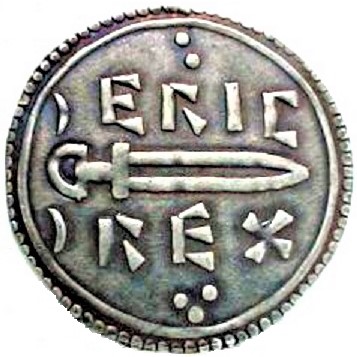
After just two years, discontent with Eric’s reign brought about his expulsion from the Kingdom. It seems that King Eadred of Wessex, the High Reeve of Bamburgh (Osulf) and the son of Olaf (Maccus) may have plotted the downfall of King Eric for their own individual interests: Eadred, to become King of all the lands of the former Heptarchy, Osulf, to extend the reach of his power over Jórvík in addition to that he already had over Bernicia, and Maccus to avenge the deposition of his father as King of Jórvík. It seems to have been arranged for Eric to be ambushed as he made his way north after being expelled. The ambush took place at Stainmore (Westmorland) in 954 where Eric, his son, and brother were all assassinated. It is considered by some historians, such as Alex Woolf, that this transfer of power was tantamount to a personal union of crowns (similar to that between Scotland and England in 1603).
As a reward for his assistance, King Eadred did give Osulf administrative authority over Jórvik, effectively ending Jórvik’s existence as an independent Kingdom and reuniting it with Bernicia in the form of the Earldom of Northumbria. Eadred had now become the ruler of the Kingdom of Wessex, Mercia, East Anglia and Northumbria .
But this was not to be the last of ‘Viking’ rule for Yorkshire ………… or England!

Kings of Yorkshire in the Kingdom of Jórvik era
| Reign | Name | Notes |
| 875-877 | Halfdan Ragnarsson | Brother of Ivar the Boneless. Killed during attempted conquest in Ireland |
| 877-883 | Barith Ivarsson, Ecgberht II or Interregnum | (Bárid mac Ímair) King of Dublin, Son of Ivar the Boneless and nephew of Halfdan Ragnarsson Ruler of Bernicia as a vassalage of Jórvik (between Kings) |
| 883–895 | Guthfrith Hardacnutson | Elected King of both Jórvík and Bernicia. Died 895. Buried at York Minster. |
| 895–896 | Sigfroðr | Elected King. |
| 896-898 | Sigfroðr & Harthacnut | Harthacnut elected to become co-king. Sigfroðr assassinated by supporters of Harthacnut. |
| 898-899 | Harthacnut | Left for Denmark to fight the Swedes, leaving his son, Gorm to rule Jórvik. Eventually became King of Denmark. |
| 899-900 | Gorm | Son of Harthacnut. In 900, accepted overlordship of Æthelwald, son of a Danish Princess and of Æthelred I of Wessex. Continued as a sub-king until 902 when he also left for Denmark and eventually succeeded his father as King there. |
| 900-902 | Æthelwald | Had taken refuge in Jorvik in 899 after a failed attempt to take the throne of Wessex. Took direct rule of Jorvik when Gorm left to fight in Denmark. Soon also gained full power over the Isle of Man, the lands of The Danelaw and Bernicia who all recognised him as the rightful King of Wessex. In an attempt to become the first King of all Angleland, he led his army against King Edward of Wessex but was killed in the Battle of Holme on 13th December 902 despite his army winning the battle. |
| 902-910 | Halfdan II | Son of Halfdan Ragnarsson. Elected King. Halfdan’s brother, Eowils, is recorded as joint king of ‘Northumbria’ during this period but this was probably in the sense that he held the vassalage title of king of Bernicia. Both were killed in the battle of Tettenhall against King Edwin of Wessex and Mercia. |
| 910–921 | Ragnall Ivarsson | Grandson of Ivar the Boneless. |
| 921–927 | Sigtrygg (the Squinty) Ivarsson | Brother of Ragnall Ivarsson. Married sister of King Æthelstan of Wessex in 926. Died 927. |
| 927 | Guthfrith Ivarsson | Brother of Sigtrygg and Ragnall. Refused Wessex overlordship. Expelled by King Æthelstan of Wessex whose forces captured York in 927. Died 934. |
| 927-939 | Æthelstan of Wessex | Æthelstan became the first overlord of all the land that would become ’England’ Died 939. |
| 939–941 | Olaf Guthfrithsson | Son of Guthfrith Ivarsson. Elected King on Æthelstan death to end Wessex overlordship and return independence to the Kingdom of Jórvík. Died 941. |
| 941–943 | Olaf Sygtryggsson | Son of Sigtrygg. Deposed. |
| 943–944 | Ragnall Guthfrithsson | Son of Guthfrith II. Driven out of Jórvík and killed by Eadmund of Wessex |
| 944-946 | Eadmund | Of Wessex. Second ruler of all the land that would become ’England’ |
| 946-947 | Eadred | Of Wessex. Third ruler of all the land that would become ’England’ |
| 947–949 | Eric (Bloodaxe) Haraldsson | Jórvík renounced Wessex overlordship in favour of this Son of King Harald I of Norway who was himself renounced due to the destructive reprisals by Wessex and their threats of worse to come unless they did so. |
| 949–952 | Olaf Sygtryggsson | Restored on invitation but deposed after three years. Died 981. |
| 952–954 | Eric (Bloodaxe) Haraldsson | Restored after successful campaigns against Scots, Welsh and Saxons but betrayed and assassinated by Osulf, High Reeve of Bernicia, in favour of King Eadred of Wessex. |
| 954 | Eadred of Wessex | Restored. Rewarded Osulf’s betrayal of King Eric by giving him administrative authority over Jórvik, as Earl of Northumbria. Mercia, East Anglia and Northumbria were now all Earldoms within the Kingdom of Wessex, Mercia, East Anglia and Northumbria. |
Jórvikskyr (Yorkshire) within the Earldom of Northumbria
Rebellion of Northumbria and Mercia, Division of the Kingdom and Autonomy
Earldom of Northumbria & periodic dominions
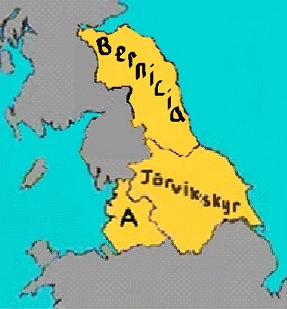
A-Northern and Central parts of former South Rheged and northern tip of former The Peak.
Eadred’s reign over Jorvikskyr was a short one as he died after just one year.and was succeeded by his nephew, Eadwig in 955. Unfortunately for Eadwig, his reign over Jorvikskyr was also cut short because the Earldoms of both Northumbria and Mercia rebelled against his impositions and, in 958, proclaimed Eadgar the Peaceable their King instead. With Eadwig carrying on as King of Wessex and East Anglia, this effectively created two separate kingdoms. However, on Eadwig’s death in 959, the King of Northumbria & Mercia, succeeded him, thereby reuniting the Kingdom of Wessex, Mercia, East Anglia and Northumbria after just one year apart.
In 963, Osulf, the Earl of Northumbria, died. Although he was a key culprit in bringing an end to Jorvik as an independent kingdom, upon his death, King Eadgar returned autonomy to the former kingdom by granting it Earldom status under Oslac, who is believed to be a relative of Osulf.
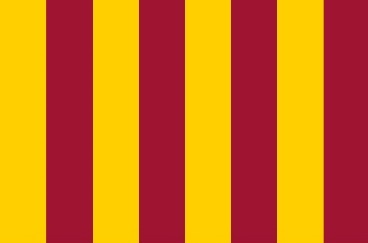
The Flag of Northumbria
Kings of Yorkshire in the Earldom of Northumbria era:
| 954-955 | Eadred | King of Wessex. Died. |
| 955-958 | Eadwig | Northumbria and Mercia rebel against Eadwig in 957 and proclaim Eadgar the Peaceable their king in 958. Eadwig carries on as king of East Anglia and Wessex until his death in 959. |
| 958 – 963 | Eadgar the Peaceable | King of Northumbria and Mercia. |
To be continued
Next: The Earldom of Jórvíkskyr (Yorkshire).
White Rose Flags & Yorkshire Day:
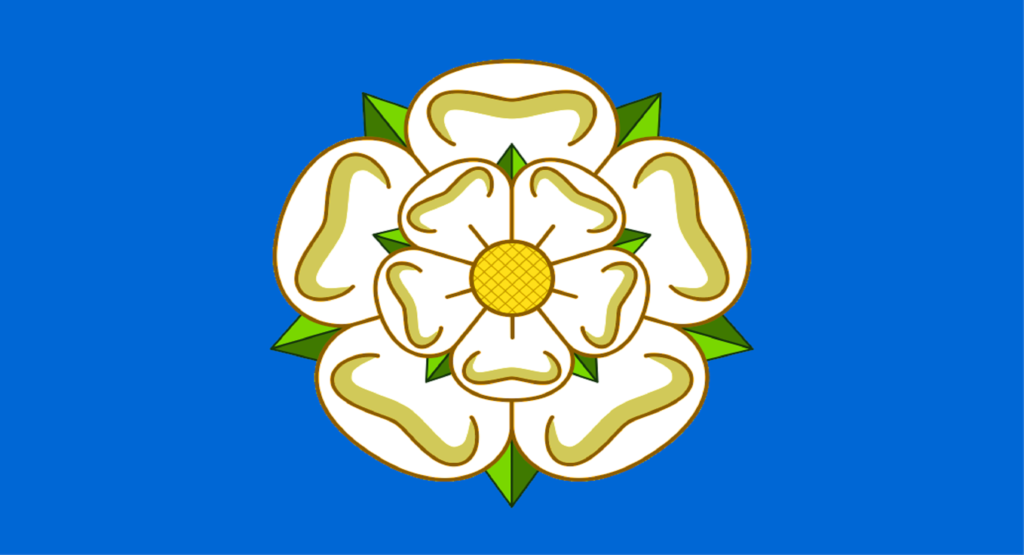
The Yorkshire flag is now recognised around the world, not least due to the success of the Yorkshire brand and to achievements in sport such as the Brownlee brothers in triathlon, the Yorkshire cricket team, the contribution of Yorkshire men and women to Great Britain’s recent Olympic medal hauls or, of course, the Tour de Yorkshire. But how did the White Rose on Pantone 300 come to be the two components of our official county flag?
Andy Strangeway, a Councillor, adventurer and fellow Yorkshire boundary campaigner from the East Riding of Yorkshire, tells us the story behind the flag via this link to the Yorkshire page of the British County Flags website.
Flags of the Ridings of Yorkshire
About the East Riding flag
About the North Riding flag
About the West Riding flag
Yorkshire Day
Why is the 1st day of August Yorkshire Day?
Geography of Yorkshire:
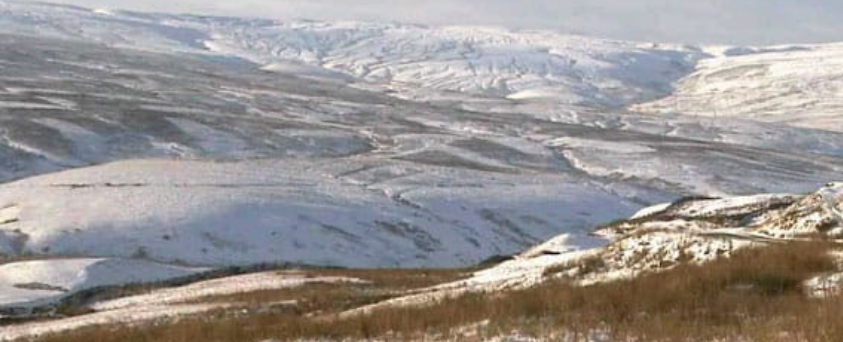
Yorkshire Geography
(From Wikishire – https://wikishire.co.uk/wiki/Yorkshire)
The County of York is by far the largest shire in the United Kingdom as well as the most populous. The northern boundary of Yorkshire is the River Tees, the eastern boundary is marked by the North Sea coast and the southern boundary the Humber Estuary and River Don and River Sheaf. The western boundary meanders along the western slopes of the Pennine Hills to again meet the River Tees. It is bordered by the counties of Durham, Lincoln, Nottingham, Derby, Chester, Lancaster and Westmorland. The county top is Mickle Fell at 2,585 ft.
Yorkshire is divided into three Ridings, whose boundaries meet at the walls of the City of York:
- the East Riding
- the North Riding
- the West Riding
The City of York within the walls is thus the only part of Yorkshire not within one of the three Ridings.
Yorkshire Riding Tops
From: https://wikishire.co.uk/wiki/County_top#Yorkshire_Riding_Tops
| Riding | Hill | Height (ft) | Height (m) | Grid reference |
|---|---|---|---|---|
| East Riding | Bishop Wilton Wold | 807 | 246 | SE8218257026 |
| North Riding | Mickle Fell | 2,585 | 788 | NY8058224534 |
| West Riding | Whernside | 2,415 | 736 | SD7385081415 |
Wapentakes

The Wapentakes of Yorkshire, coloured by Riding
The Ridings are divided into wapentakes, analogous to hundreds in other counties:
- East Riding:
- North Riding:
- West Riding:
Cities
- York (county town)
- Bradford, W.R.
- Kingston-upon-Hull, E.R.
- Leeds, W.R.
- Ripon, W.R.
- Sheffield, W.R. (partly in Derbyshire)
- Wakefield, W.R.
Towns
See: “Category:Towns and villages in Yorkshire“
The largest towns of Yorkshire include:
- Barnsley, W.R.
- Beverley, E.R.
- Bridlington, E.R.
- Castleford, W.R.
- Dewsbury, W.R.
- Doncaster, W.R.
- Harrogate, W.R.
- Huddersfield, W.R.
- Halifax, W.R.
- Keighley, W.R.
- Middlesbrough, N.R.
- Northallerton, N.R.
- Pontefract, W.R.
- Pudsey, W.R.
- Redcar, N.R.
- Rotherham, W.R.
- Scarborough, N.R.
- Skipton, W.R.
Within the borders of the county are areas which are widely considered to be among the greenest in England, due to the vast stretches of unspoiled countryside in the Yorkshire Dales and North York Moors and to the open aspect of some of the major cities.[1][2] Yorkshire has sometimes been nicknamed “God’s Own County”.[3] The emblem of Yorkshire is the white rose of the royal House of York, which as displayed on a dark blue background forms the Flag of Yorkshire.[4] Yorkshire Day, held on 1 August, is a celebration of the general culture of Yorkshire, ranging from its history to its own dialect.[5]
Physical and geological

Geology of Yorkshire
In Yorkshire there is a very close relationship between the major topographical areas and the geological period in which they were formed. The Pennine chain of hills in the west is of Carboniferous origin. The central vale is Permo-Triassic. The North York Moors in the north-east of the county are Jurassic in age while the Yorkshire Wolds to the south-east are Cretaceous chalk uplands.
Yorkshire is drained by several rivers. In western and central Yorkshire the many rivers empty their waters into the River Ouse which reaches the North Sea via the Humber Estuary.[6] The most northerly of the rivers in the Ouse system is the River Swale, which drains Swaledale before passing through Richmond and meandering across the Vale of Mowbray. Next, draining Wensleydale, is the River Ure, which joins the Swale east of Boroughbridge. The River Nidd rises on the edge of the Yorkshire Dales National Park and flows along Nidderdale before reaching the Vale of York.[6]

The main rivers of Yorkshire
Click logo below for more from Wikishire:
Yorkshire Wildlife:
An organisation dedicated to conserving, protecting and restoring wildlife and wild places in Yorkshire is the Yorkshire Wildlife Trust.
Their vision is for a Yorkshire that is abundant in wildlife, with more people having a genuine and meaningful connection with nature.
They were established as a charity in 1946, and are part of The Wildlife Trusts movement. They look after over 100 nature reserves right across Yorkshire, and are involved in hundreds of other conservation-related projects. Their work inspires people to understand the value of nature and to take action for it.
You can learn more about YWT from their website which can be accessed by clicking on their logo, below:

Yorkshire Dialect:

Although there are many words in the English language that derive from Old Danish/Old Norse due to Scandinavians coming to Britain during the 9th and 10th centuries, they represent only a fraction of the number of words used in Yorkshire that originate from the Danes who founded the Kingdom of Jórvik and from the Norwegians who also settled there. Below are links to records supporting this:
- Newspaper article, “Do you speak Yorkshire?”
- List of Yorkshire Dialect Words of Old Norse Origin
- Documentary footage of Norse impact on Yorkshire dialect (10 mins)
The influence of Old Norse in Yorkshire was so great that by 954 when Jórvik finally merged with England, the spoken word there was more a hybrid language than a dialect. So much so that people from the south of England struggled to understand it! To Yorkshire, dialects would have been regarded as the subtle differences that existed between the way people spoke in different parts, even neighbouring settlements, within Yorkshire.
As time moves on, so too does the way people speak and the way people speak in Yorkshire is no exception to that. The Yorkshire Dialect Society was founded in 1897 after collating around 350,000 Yorkshire words and phrases for preservation into the future. It is the oldest surviving dialect society in the world and further information on Yorkshire Dialect can be found on their website through the link in their logo, below:
Yorkshire Sport:
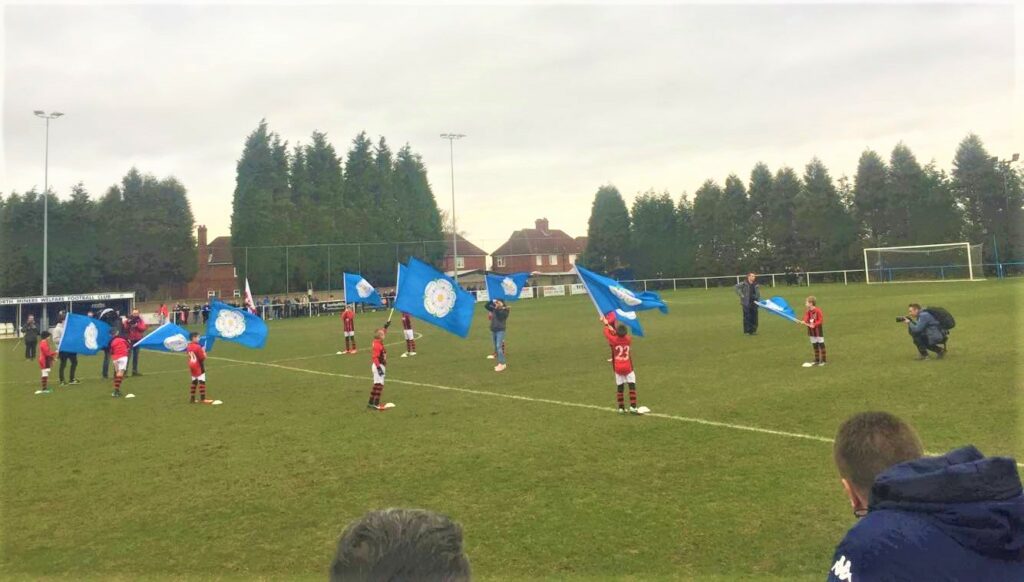
(v Ellan Vannin 28/01/2018)
In this section we intend to bring you links to sites on Yorkshire teams and events in various sports:
Association Football:
White Rose Football
Includes news of all Yorkshire Teams in top 4 divisions
Yorkshire International Football Team
Cricket:
Yorkshire South Premiere League
Rugby League:
White Rose Rugby League Football
Includes tables of top 3 divisions & links to websites of all Yorkshire teams in them
Rugby Union:
Yorkshire Rugby Union Football
Includes news of Yorkshire’s County side and Yorkshire clubs in National, Regional and County Leagues
Yorkshire.guide:
A website that compliments this page of our website by providing visitors to Yorkshire and residents of all of the Traditional County of Yorkshire with a top-class, honest and impartial information guide extending way beyond the domain of tourism. Includes an excellent detailed map of REAL Yorkshire. Access the website through the link in their logo, below:
YDM Post Relevant to this Section:
Yorkshire Boundaries Campaign – Phase Two Report & Campaign Conclusion
Yorkshire features strongly in very worthy Lords debate on Traditional Counties
BE “YORKSHIRE” ON THE 2021 CENSUS
Happy St Edwin’s Day to all Yorkshire folk!
An unanswered question as prospects of a new Local Authority increase
Web enquiry – Yorkshire/Lancashire Boundary
Yorkshire Boundaries Campaign – Phase One Update
Collaborating on the real geography of Yorkshire
At last – Humberside to disappear from Royal Mail database
Councils reminded to fly the flag for Yorkshire on Yorkshire Day
Simon Jenkins – “Why Mighty Yorkshire is another country in waiting”
The April Fool in Yorkshire that wasn’t!
Find more relevant posts in our News & Blog page




